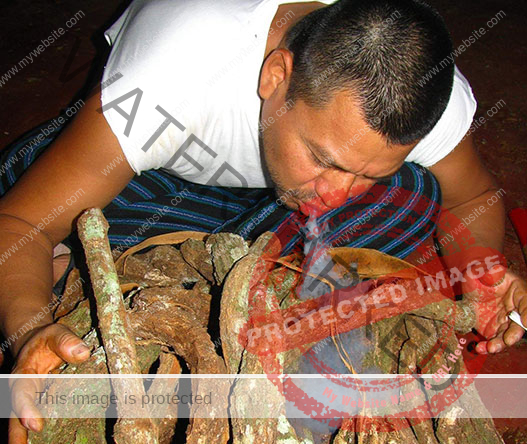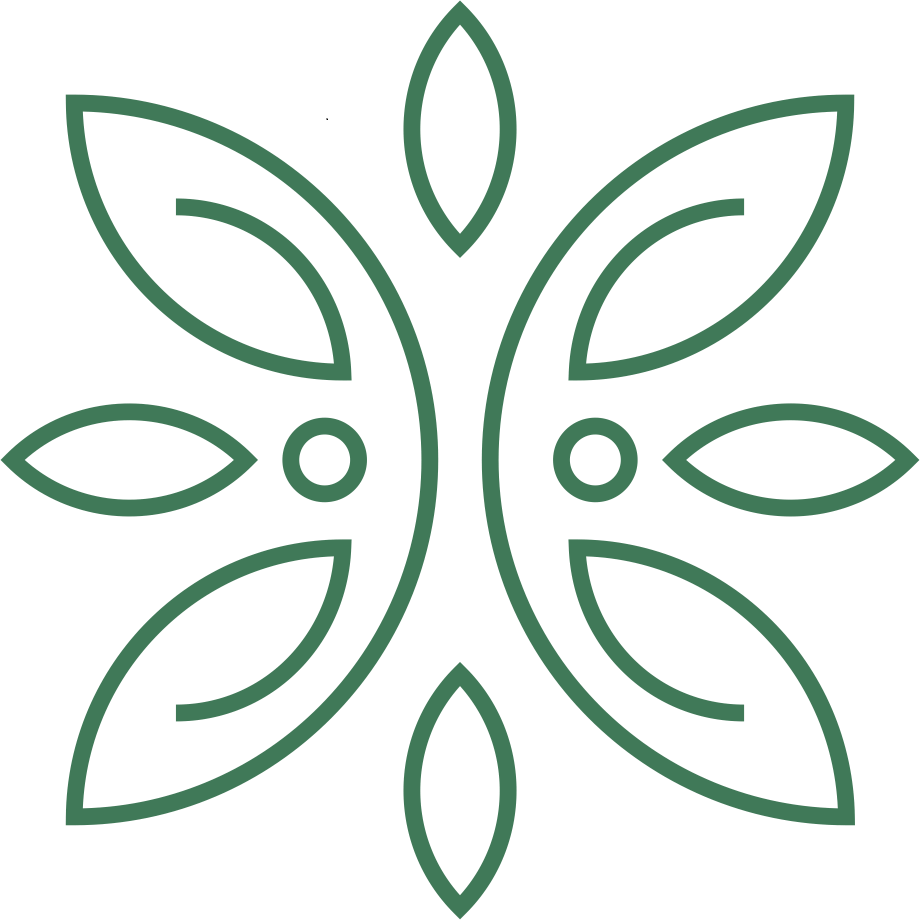“The shaman creates a sacred and protected space for you and acts as a channel for the spirit realms.”
The shamanic ayahuasca ceremony
Led by a respected ceremony leader
A shamanic ritual is a practice that involves a practitioner (the shaman or ceremony leader) who reaches altered states of consciousness in order to interact with the spirit world. Shamanism is not a religion, but a name for the practice of making a connection with the spirit realms. According to the shamanic principle, shamans are intermediaries between the human world that we live in and the invisible spirit world.
The shaman is mostly a community leader or medicine man in indigenous tribes. He or she is considered wise and pure and has quite some influence on the tribe. Throughout history, the central role of the tribal shaman has been to provide spiritual leadership as well as medicinal care. Through rituals, in which he achieves a certain trance state, (s)he is in direct contact with entities and spirits from other dimensions and conveys the wisdom from these realms to treat ailments, heal people or solve problems afflicting the community.

Ayahuasca and Amazonian shamanism
For many thousands of years, various ancient wisdom civilizations across the planet have practiced shamanic healing techniques. The indigenous tribes in the Amazon have been using the sacred plant medicine ayahuasca for centuries (possibly even thousands of years), throughout Peru, Brazil, Columbia and Ecuador. The practice of the healers working with this sacred plant medicine can be called shamanism. However, the word “shaman” is hardly ever used in the Amazon to describe a healer, because for many indigenous people this word has a connotation to the word “charlatan”, which is a person falsely claiming to have a special knowledge or skill.
In Peru the shaman or healer is called “Onaya”, “Maestro”, “Ayahuasquero”, “Curandero” or “Vegetalista”. However, there are many different names for these healers throughout the Amazon. The Columbian Kofan tribes call their healers “Taita” or “Curacas”, for example. And as many names there are for the healers, equally there are names for the sacred medicine: yage, natema, oni, caapi, etc.
Even though the names, the complex rituals and the healing ceremonies differ from tribe to tribe, the Amazonian shamans have a lot in common as well. They all view both mental and physical illness as disharmony on energetic and spiritual levels. It is this unresolved disharmony that they are trying to address in their healing rituals. Restoring the balance is a shared common goal of the ceremonies.

The ceremony yurt
The ayahuasca ceremonies will be held in our beautiful Yurt (traditional round tent) and led by our Peruvian shaman or ceremony leader. We consider the ceremony room as a sacred space. Therefore, we ask you to take of your shoes and leave them at the door. Before we drink the medicine and start the actual ceremony, we will have some time with the whole group to share our intentions for the ceremony. Having a clear intention can really enhance your experience, feel what it is you wish to let go of so you can ask the spirit of ayahuasca for healing and guidance (read more about setting intentions).

Acsauhaya’s ceremonies
All ceremonies are group ceremonies, this means that, besides your individual process, there is also a group process, which is why we try to keep the group energy as a whole and we ask you not to leave the ceremony room during the ceremonies, unless you need to use the toilet. We also ask you not to interact with other participants during the ceremonies, out of respect for the individual process of yourself and the other, the group process and our shaman.
The shaman will lead the ceremony by singing his icaros, playing instruments and blowing Mapacho smoke (sacred tobacco). In this video you can hear our shaman Ronald Rivera sing one of his icaros. The ceremony will last approximately 4 to 5 hours. The shaman’s experience allows him or her to feel what is best for the individual participants as well as for the group process and what is the right amount of the medicine for people to drink. When (s)he feels the work is done, (s)he will close the ceremony.

The tobacco ceremony
The purpose of the tobacco ceremony is to purify and balance the body on physical, mental, emotional and energetic levels.
Many shamans consider the tobacco ceremony to be a good preparation for the ayahuasca ceremonies to come, because the release of all this negative energy allows for deeper healing. In this video our shaman Ronald Rivera talks about the important preparation the tobacco ceremony offers for the ayahuasca ceremonies that follow.
Please note that the tobacco ceremony will take place before the ayahuasca ceremonies. Therefore, guests choosing to go for this option, start their retreat one day earlier. The second day of their retreat will be the first day for those participating in the 4-day ayahuasca retreat.
“Note: Drinking ayahuasca is a very vulnerable process, in which it is essential that you feel safe and can trust the intentions, the medicine and the (experience of the) team facilitating your (inner) transformation. Your safety is our highest priority.We only work with shamans that have been personally tested by a member of the Acsauhaya team. “
The Siberian word “shaman” used generically in modern talk to describe those people in an indigenous community who mediate between their people and the invisible spirit world. Traditionally, shamans are indigenous community leaders and medicine men, often seen as the intellectual and spiritual leaders of their communities.
In traditional shamanic tribes, the shaman usually has quite some influence on the tribe, and therefore often performs the task of leader of the community. However, the central role of the tribal shaman has been to provide spiritual leadership as well as medicinal care. It is said that the shaman is in direct contact with entities and spirits from the spiritual realms through rituals in which he achieves a certain trance state. When in this state, he conveys the wisdom from these realms to treat ailments, heal people or solve problems afflicting the community.
The shaman’s main role during a ceremony is to create a sacred and protected space in which all participants are protected from hostile supernatural influences. Being a shaman is not a job, it’s more like a life’s path. Traditional shamans have been trained by teachers from previous generations for years and have worked on facing their own darkness, in order to prevent them from unwittingly passing it on to others.
The icaros (songs) a shaman sings, he has directly received from the plants. One can feel their power, even without understanding the meaning of the words. The shaman acts as a channel for healing powers of different healing spirits. According to the shaman, every participant is in need of different energies and he adapts his healing so that the ritual is most beneficial for each participant and the group as a whole. In his visions, he energetically cleanses each participant and receives healing energies that participants might need.
The shaman beams with strong energy and determination during the ceremony, building a strong veil of protection, and he is able to perform a special ritual of “sucking out negative energies” from the participants body. However, that being said, ayahuasca ceremonies are never the shaman’s show, they are the plant’s show. The shaman acts as a vessel, but it is the plant that possesses true healing powers.
Nothing specific can be said about what will happen if you take ayahuasca without a shaman. In the above questions the role of the shaman is explained in detail. The main purpose of the shaman is to create a sacred and protected space in which participants are protected from hostile mystic spirits. They use their knowledge, wisdom and rituals to hold the safe space. Without this, drinkers can be exposed to hostile entities and dark experiences.
Besides this, experienced shamans have already faced the darkness within themselves numerous times, and thereby developed a deep relationship based on trust with this sacred medicine. They know how to handle egoic meltdowns or rooms full of intense purging participants and waves of traumatic release. Through their own experience they can guide you into the beautiful unknown.
However, the plant will still do “her work”. Ayahuasca ceremonies are never the shaman’s show, they are the plant’s show. The shaman acts as a vessel, but it is the plant that possesses true healing powers.
As both the brew and the rituals are from the Amazon, this is the place to be to find an ayahuasca shaman. Ayahuasca shamans are mainly active in Peru, Brazil, Columbia and Ecuador. However, intense proliferation over the last decades has made the ayahuasca market flood with unscrupulous, self-appointed shamans operating with hidden agendas and driven by foul intentions. These developments have made it a dicey task for tourists to find a shaman whose work is safe and trustworthy.
In Europe there are some ayahuasca providers that occasionally work with an Amazonian shaman, but the offer is limited and so it is hard to claim your spot in one of those, unless you are already part of their regular customer base.
Acsauhaya is the first center to work with the permanent presence of a Peruvian shaman. The worldwide network and Peruvian contacts that we have gained over the years, enable us to find the right shamans to work with. We thereby take the risk away of you having to search for an honest, capable shaman in the Amazon yourself and make your safety into our highest priority.


